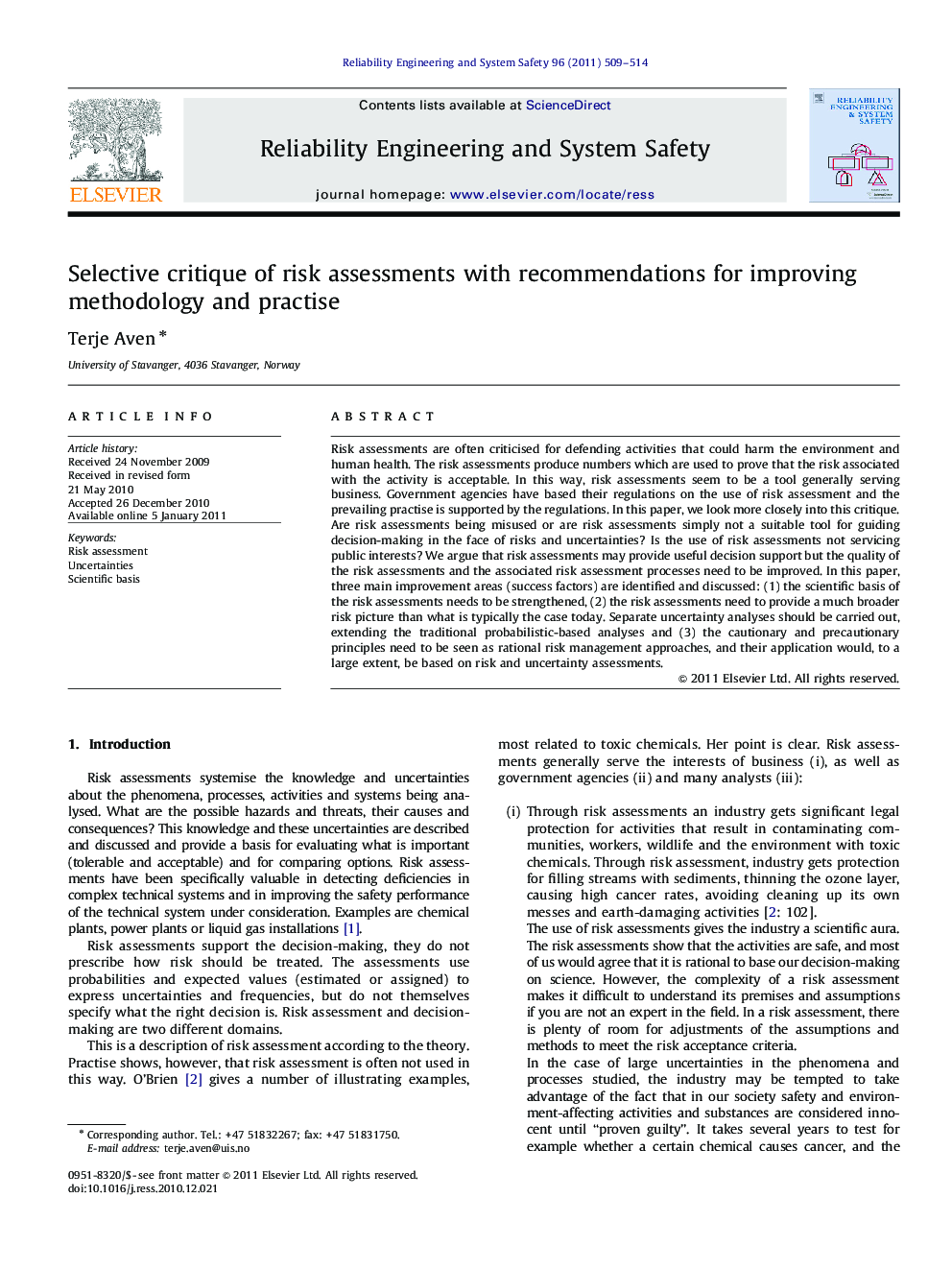| Article ID | Journal | Published Year | Pages | File Type |
|---|---|---|---|---|
| 805842 | Reliability Engineering & System Safety | 2011 | 6 Pages |
Risk assessments are often criticised for defending activities that could harm the environment and human health. The risk assessments produce numbers which are used to prove that the risk associated with the activity is acceptable. In this way, risk assessments seem to be a tool generally serving business. Government agencies have based their regulations on the use of risk assessment and the prevailing practise is supported by the regulations. In this paper, we look more closely into this critique. Are risk assessments being misused or are risk assessments simply not a suitable tool for guiding decision-making in the face of risks and uncertainties? Is the use of risk assessments not servicing public interests? We argue that risk assessments may provide useful decision support but the quality of the risk assessments and the associated risk assessment processes need to be improved. In this paper, three main improvement areas (success factors) are identified and discussed: (1) the scientific basis of the risk assessments needs to be strengthened, (2) the risk assessments need to provide a much broader risk picture than what is typically the case today. Separate uncertainty analyses should be carried out, extending the traditional probabilistic-based analyses and (3) the cautionary and precautionary principles need to be seen as rational risk management approaches, and their application would, to a large extent, be based on risk and uncertainty assessments.
